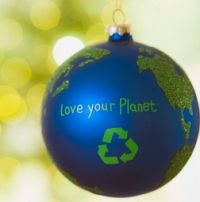

Climate change is impacting Christmas traditions around the world. While Hollywood often portrays a snowy Christmas, many people celebrate the holiday in different climates. However, climate change is threatening both snowy and warmer Christmas traditions.
In the Netherlands, a cherished tradition is ice skating on frozen ponds, canals, and rivers. This includes the iconic Elfstedentocht, a 200km ice skating race through 11 cities in Friesland, which hasn't been held in 24 years due to warmer winters. On "ice days" schools would be closed for skating, a rare occurrence now due to climate change.
Mitzi Jonelle Tan, a 22-year-old climate activist from the Philippines, shares how her country, known for its long Christmas season, is experiencing severe impacts from climate change. A cherished tradition is making parol lanterns, which families create together using recycled materials. "The parol is something that families create together using colourful, recycled plastic and little pieces of wood," says Jonelle Tan. However, rising sea levels threaten these traditions. "In 50 years' time, this special place for the Jonelle Tan family could no longer exist due to rising sea levels," she says. The Philippines, the world's most vulnerable country to climate change disasters, faces frequent typhoons causing severe flooding and destruction.
Recalling the impact of super typhoon Goni, she says, "People were stranded on rooftops and all the roads were flooded. A few days before Christmas, we were still helping clean up the mud that had flooded the houses."
Salvador Gómez-Colón from Puerto Rico talks about how Christmas is the biggest holiday in his country. "Christmas is a spectacle," he says. One beloved tradition is the parranda, where people carol in the streets with cymbals and drums. Even after the devastating Hurricane Maria in 2017, Puerto Ricans continued to celebrate. "The parrandas happened. It was performative – to show that everything was fine," he recalls. Despite the island still being without power in January, the community gathered for the Fiestas de la Calle San Sebastián, Puerto Rico's biggest annual festival. "There was live music and a lot of performances. It was a blast," he says.
He describes how much of the island was still in darkness during the Christmas period after Hurricane Maria. To help, he started a crowdfunding campaign called "Light and Hope for Puerto Rico," raising almost $170,000 to support 3,500 families with hand-cranked washing machines and solar lamps. "Santa couldn't come to homes that year, [but] the lights were gifts in themselves," he says. Reflecting on the lasting impact, he adds, "You can repair bridges and street signs, but you can't repair the harm that has been done to the Puerto Rican mind."
Daniel Holanda from Brazil shares how his family starts celebrating Christmas early, on 24 November, by decorating the tree. However, several years ago, their house flooded during this festive tradition. "We had to stop the party and remove the water," he says. Flooding is common in his home state of Goiás, and such extreme weather is altering Christmas traditions. "Christmas has changed a lot since I was a child. We used to play a lot of different games outside. Now we can't do it anymore because of the flooding," he explains. "Today children can't enjoy Christmas in the same way as they always have to be careful and prepared that something is going to happen."
Goiás is home to the Cerrado, a vast savannah with thousands of rare species. Scientists warn that this biodiversity hotspot may collapse in less than 30 years if temperatures continue to rise and large agricultural businesses convert forests into soy plantations. Besides flooding, the region has also suffered from extreme drought in recent years.
Wildfires are another significant issue in Goiás, with the effects lingering long after the peak fire season. "We can smell sulphur from our homes," Holanda says. "Sometimes it is difficult to breathe."
Despite the challenges posed by climate change, communities around the world continue to adapt and find ways to preserve the spirit of Christmas, demonstrating resilience and the enduring power of tradition.